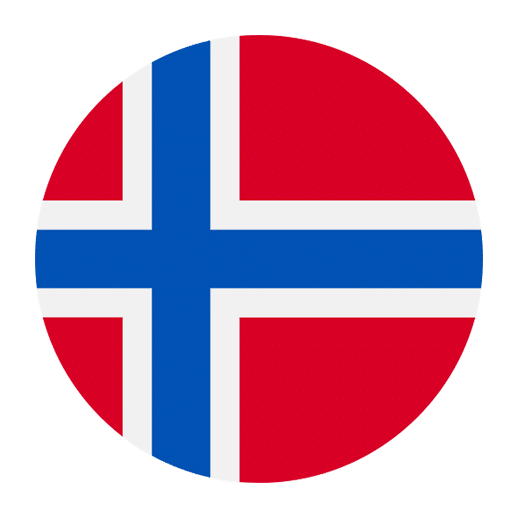Learning a new language can be a thrilling yet challenging endeavor. Among the various aspects of language learning, acquiring vocabulary is crucial. For music lovers, learning the vocabulary related to music and instruments in Norwegian can be especially rewarding. This article will guide you through essential Norwegian vocabulary for music and instruments, enriching your linguistic repertoire and enhancing your understanding of Norwegian culture.
Basic Music Vocabulary
Before delving into specific instruments, it’s essential to grasp some basic musical terms. These words will help you navigate conversations about music, whether you’re discussing genres, performances, or your favorite artists.
– **Musikk**: Music
– **Sang**: Song
– **Melodi**: Melody
– **Rytme**: Rhythm
– **Tekst**: Lyrics
– **Konsert**: Concert
– **Band**: Band
– **Artist**: Artist
– **Komponist**: Composer
– **Sjanger**: Genre
– **Album**: Album
– **Noter**: Sheet music
Genres of Music
Understanding music genres is fundamental for discussing your musical preferences. Here are some common music genres translated into Norwegian:
– **Klassisk musikk**: Classical music
– **Jazz**: Jazz
– **Rock**: Rock
– **Pop**: Pop
– **Hip hop**: Hip hop
– **Elektronisk musikk**: Electronic music
– **Folkemusikk**: Folk music
– **Blues**: Blues
– **Reggae**: Reggae
– **Country**: Country
Musical Instruments Vocabulary
Musical instruments are the backbone of music creation. Knowing the Norwegian names for these instruments can be incredibly useful, whether you’re learning to play an instrument or just talking about them.
String Instruments
String instruments are popular in many music genres, including classical, folk, and pop music. Here are the Norwegian names for some common string instruments:
– **Fiolin**: Violin
– **Bratsj**: Viola
– **Cello**: Cello
– **Kontrabass**: Double bass
– **Gitar**: Guitar
– **Akkustisk gitar**: Acoustic guitar
– **Elektrisk gitar**: Electric guitar
– **Harpe**: Harp
– **Mandolin**: Mandolin
– **Banjo**: Banjo
Wind Instruments
Wind instruments are crucial in orchestras, bands, and various music genres. Here’s a list of wind instruments in Norwegian:
– **Fløyte**: Flute
– **Obo**: Oboe
– **Klarinett**: Clarinet
– **Saksofon**: Saxophone
– **Fagott**: Bassoon
– **Trompet**: Trumpet
– **Trombone**: Trombone
– **Horn**: French horn
– **Tuba**: Tuba
Percussion Instruments
Percussion instruments provide the rhythm and beat that form the foundation of many musical compositions. Here are the names of some percussion instruments in Norwegian:
– **Tromme**: Drum
– **Slagverk**: Percussion
– **Tamburin**: Tambourine
– **Xylofon**: Xylophone
– **Marimba**: Marimba
– **Cymbaler**: Cymbals
– **Bongotrommer**: Bongo drums
– **Congas**: Congas
– **Timpani**: Timpani
Keyboard Instruments
Keyboard instruments are versatile and found in various music genres, from classical to contemporary. Here’s a list of keyboard instruments in Norwegian:
– **Piano**: Piano
– **Flygel**: Grand piano
– **Keyboard**: Keyboard
– **Orgel**: Organ
– **Synthesizer**: Synthesizer
– **Cembalo**: Harpsichord
Describing Music and Performance
To discuss music more comprehensively, you’ll need to describe it. Here are some useful adjectives and phrases to describe music and performances in Norwegian:
– **Vakker**: Beautiful
– **Energetisk**: Energetic
– **Rørende**: Moving
– **Harmonisk**: Harmonious
– **Dynamisk**: Dynamic
– **Intens**: Intense
– **Melodisk**: Melodic
– **Rytmisk**: Rhythmic
– **Utsøkt**: Exquisite
– **Imponerende**: Impressive
Additionally, here are some phrases that might come in handy:
– **Jeg liker denne sangen**: I like this song.
– **Denne musikken er fantastisk**: This music is fantastic.
– **Hvem er komponisten?**: Who is the composer?
– **Hva slags musikk liker du?**: What kind of music do you like?
– **Kan du spille et instrument?**: Can you play an instrument?
– **Jeg spiller gitar**: I play the guitar.
– **Jeg elsker å gå på konserter**: I love going to concerts.
Common Verbs Related to Music
Understanding verbs related to music is essential for discussing musical activities. Here are some key verbs:
– **Spille**: To play
– **Synge**: To sing
– **Lytte**: To listen
– **Komponere**: To compose
– **Øve**: To practice
– **Opptre**: To perform
– **Opptak**: To record
– **Mikse**: To mix
– **Dirigere**: To conduct
– **Improvisere**: To improvise
Examples in Sentences
To help you get a better grasp of these verbs, here are some example sentences:
– **Jeg liker å spille gitar**: I like to play the guitar.
– **Hun synger i et kor**: She sings in a choir.
– **Vi lytter til musikk hver kveld**: We listen to music every evening.
– **Han komponerer sin egen musikk**: He composes his own music.
– **De øver hver dag**: They practice every day.
– **Bandet skal opptre i kveld**: The band will perform tonight.
– **Vi gjorde et opptak i studioet**: We made a recording in the studio.
– **Han mikser sangene sine selv**: He mixes his own songs.
– **Dirigenten leder orkesteret**: The conductor leads the orchestra.
– **De improviserte en ny melodi**: They improvised a new melody.
Musical Notation and Theory
If you are delving deeper into music, understanding some musical notation and theory terms in Norwegian can be very beneficial. Here are some basic terms:
– **Note**: Note
– **Skala**: Scale
– **Akkord**: Chord
– **Takt**: Measure
– **Nøkkel**: Clef
– **Dur**: Major
– **Moll**: Minor
– **Tempo**: Tempo
– **Dynamikk**: Dynamics
– **Fortegn**: Key signature
Examples in Sentences
And here are some example sentences using these terms:
– **Denne sangen er i C-dur**: This song is in C major.
– **Vi lærte en ny skala i dag**: We learned a new scale today.
– **Akkordene i denne sangen er enkle**: The chords in this song are simple.
– **Han spiller i et raskt tempo**: He plays at a fast tempo.
– **Dynamikken i stykket er imponerende**: The dynamics in the piece are impressive.
Learning Resources
To master Norwegian music vocabulary, immerse yourself in Norwegian music and utilize various resources:
– **Listen to Norwegian music**: Explore different genres and artists to familiarize yourself with the sound and vocabulary.
– **Watch concerts and performances**: Watching live performances, either online or in person, can help you understand musical terms in context.
– **Use language learning apps**: Apps like Duolingo, Babbel, and Memrise offer vocabulary lists and exercises.
– **Take music lessons in Norwegian**: If possible, take music lessons from a Norwegian-speaking instructor.
– **Join Norwegian music communities**: Engaging with Norwegian-speaking musicians and music lovers can provide practical experience and improve your language skills.
Conclusion
Learning Norwegian vocabulary for music and instruments can significantly enrich your musical and linguistic experiences. By familiarizing yourself with the terms and practicing them in context, you’ll be able to discuss and appreciate music on a deeper level. Whether you’re a musician, a music enthusiast, or a language learner, this vocabulary will open new doors in your journey of learning Norwegian. So, start listening, playing, and exploring the beautiful world of Norwegian music today!

